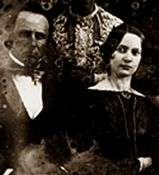Butler Island Plantation
| Butler Island Plantation | |
|---|---|
| Butler Plantation | |
|
Plantation house | |
  | |
| Nearest city | Darien, Georgia |
| Coordinates | 31°21′17″N 81°26′47″W / 31.354725°N 81.446491°WCoordinates: 31°21′17″N 81°26′47″W / 31.354725°N 81.446491°W |
| Area | 1,500 acres (610 ha) |
| Governing body | Georgia Department of Natural Resources |
Butler Island Plantation is a former rice plantation located on Butler Island on the Altamaha River delta just South of Darien, Georgia. It was originally owned by Major Pierce Butler. The plantation is managed by the Georgia Department of Natural Resources.
History
Major Pierce Butler, who was one of the founding fathers of the United States and a supporter of slavery, owned the property in 1790. He was in charge of the plantation until his death in 1822. After his death, Roswell King Jr. managed the property until 1838 when the two chosen grandsons of Butler’s oldest daughter were of age to take control themselves.[1]

Late in 1838, one of the grandsons, Pierce Mease Butler, bought the property and brought his wife and family with him to the plantation. His wife Frances Anne “Franny” Kemble, was opposed to slavery and wanted to see and learn how the slaves lived. However, Butler hoped the visit would change her views on slavery. She had been told that the slaves were well-treated and that they were never sold. She realized very quickly that this was not true. During her time there, she kept a diary and wrote about the horrific treatment and living conditions of the slaves. Eventually, she published her writing, Journal of a Residence on a Georgian Plantation in 1838-1839 (ISBN 0-820-30707-6),[2] which is thought by some to have influenced the British against supporting the Confederacy during the Civil War.[3][4]
In 1859 Kemble divorced Butler, who was then seriously in debt. To help bring in more revenue, Butler auctioned off 436 of his slaves including men, women, children, and infants. The sale was located on what used to be the Ten Broeck Race Course, two miles outside Savannah, Georgia. The auction is considered the largest slave sale in US history. Some slaves were held in buildings used for the stabling of horses. After days of buyer inspections, and two days of the agonizing auction, families were separated for the first time in their lives. This would come to be known as The Weeping Time.[5][1]
The plantation was abandoned when the Civil War began. In 1866, Butler's daughter Frances returned with her father to attempt to restore the plantation to its former glory. Frances had adopted her father's pro-slavery views and kept a diary like her mother. She published it in 1883, titled Ten Years on a Georgia Plantation (ISBN 1-498-15893-5).[6] It is considered the best account of what it was like in Georgia during Reconstruction. Frances remained loyal to her father. She felt blacks fared better under slavery than freedom. Due to the lack of slave labor, and the postwar depression in the South, plantations were doomed to fail, and the fifth generation of Butlers sold the remains of their lands in 1923.[7]
Today the Georgia Department of Natural Resources manages the plantation. The area is open every day to the public for recreational activities.[1]
Photos
.jpg) Remains of the steam-operated rice mill
Remains of the steam-operated rice mill.jpg) Side of the Plantation house
Side of the Plantation house.jpg) Back of plantation house
Back of plantation house.jpg) Historical marker
Historical marker.jpg) Tidal-operated mill
Tidal-operated mill
See also
- The Great Slave Auction
- Darien, Georgia
- Fanny Kemble
- Hofwyl-Broadfield Plantation - a nearby plantation
References
- 1 2 3 "Butler Island Plantation". Georgia Historical Society. Retrieved 2017-04-19.
- ↑ Kemble, Frances (1863). Journal of a Residence on a Georgian Plantation in 1838-1839. New York: Harper & Brothers. Retrieved June 4, 2017.
- ↑ "Butler Island Plantation". Georgia Historical Society. Retrieved 2017-04-19.
- ↑ "Butler Island". www.pbs.org. Retrieved 2017-04-19.
- ↑ Kwesi, DeGraft-Hanson (February 18, 2010). "Unearthing the Weeping Time: Savannah's Ten Broeck Race Course and 1859 Slave Sale". Southern Spaces. ISSN 1551-2754. doi:10.18737/M76K6J.
- ↑ Leigh, Frances Butler (1883). Ten Years On a Georgia Plantation Since the War. London: Richard Bentley & Son. Retrieved June 4, 2017.
- ↑ "Longstreet Highroad Guide to the Georgia Coast & Okefenokee: Altamaha River Bioreserve". Sherpa Guides. Retrieved 2017-04-19.
External links
-
 Media related to Butler Plantation, Butler Island at Wikimedia Commons
Media related to Butler Plantation, Butler Island at Wikimedia Commons
.jpg)